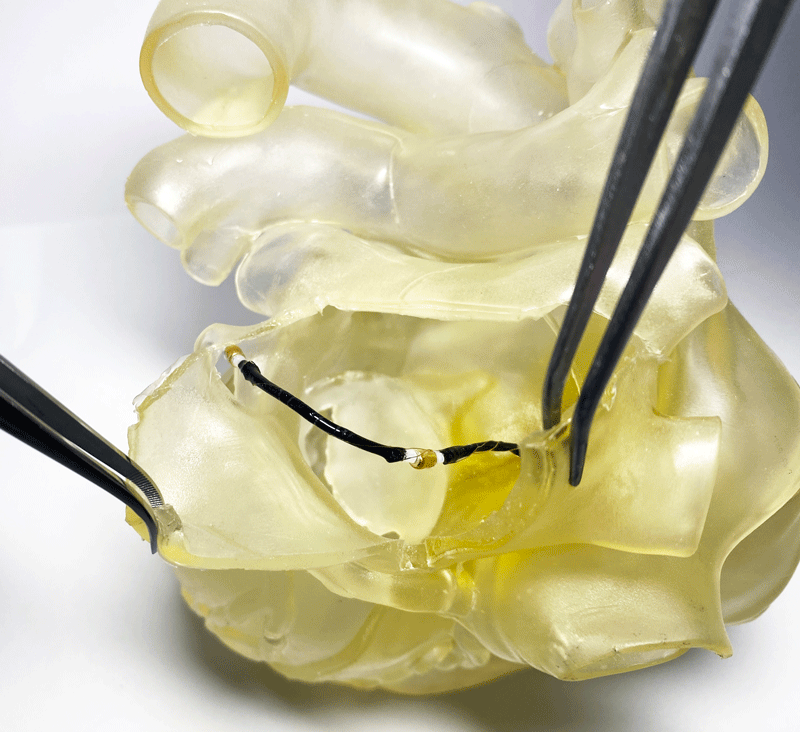Cardiac catheter switches from soft to rigid states
A cardiac catheter switching between soft and rigid states during surgery could make treatment of cardiac arrhythmia simpler and more effective.

Engineers at École Polytechnique Fédérale de Lausanne (EPFL) and Eidgenössische Technische Hochschule (ETH) in Zürich, Switzerland, explain that the instrument is equipped with two segments that enable variable stiffness change. Each segment is made up of three layers.
The innermost layer consists of a polytetrafluoroethylene (PTFE) tube with a working channel that houses the cables needed to operate the catheter and the cooling system.
The central layer is made of a conductive shape memory polymer (CSMP) – produced using commercially available pellets of polyurethane (PU), a solvent and carbon black powder – which simultaneously serves as a heater, a temperature sensor and a variable stiffness substrate. The outer layer is made of silicone and encapsulates the instrument.
This structure allows the catheter to be fabricated to 2.3mm in diameter, making it suitable for cardiac surgeries.
‘The stiffness change from rigid to soft triggers by applying power to the CSMP layer. The layer heats up the same way as a resistor in the electrical circuit due to applied direct Joule heating. When the heat is turned off, the CSMP layer cools down to the temperature of a human body and solidifies,’ describes PhD student Yegor Piskarev.
‘The variable stiffness thread (VST) is made through a new scalable fabrication process, which consists of a dipping technique that enables the fabrication of threads with the desired electrical resistance and thickness (with a step size of 70μm).’
Piskarev explains that there are currently two main approaches for cardiac ablation – manual and remote. Manual catheters make use of tendon-driven actuation for navigation within the human body, while remote magnetic catheters require a permanent magnet embedded in the device and its motion is controlled by an externally generated magnetic field.
The complex anatomy of the human heart and lack of 3D visualisation require catheters with high dexterity to reach more inaccessible regions. Often, surgical procedures, such as those in the heart, require bending catheters in a wide variety of directions to position the tool appropriately. However, the externally generated magnetic field in a remote navigation system is typically confined to a single direction.
Piskarev says, ‘Our technology allows bending in multiple directions due to the integration of variable stiffness elements.’
The VST was initially tested to understand the stiffness change ratio, reaction times, safety working temperature, and resistance change under different temperatures. Then, a scalable fabrication process was characterised to determine the relationship between the number of dips, layer thickness and resistance of this layer.
‘After that, the catheter was equipped with the VST and tested in a remote magnetic navigation system. We determined the bending angle change under different magnitudes and directions of the magnetic field for rigid and soft states.’
Piskarev says that the dipping fabrication process means the device could be scaled for specific applications. ‘By choosing the number of dips, the thickness and the resistance of the CSMP coating can be tuned. The thickness of CSMP coating determines the bending stiffness and stiffness change factor of a VST. Thus, if we know as input data the external forces that the VST has to withstand, we can design it for this particular need.’
The researchers are now refining the catheter so that it is more suitable for industrial needs using precise closed-loop control and ablation tip, following which they will test the device in vitro.

